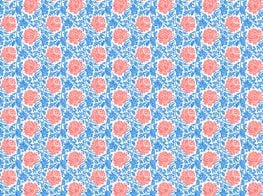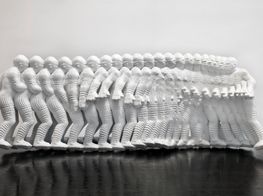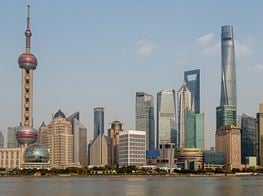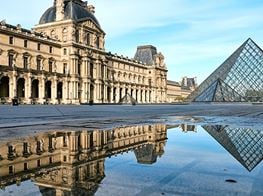'Metamorphosis Of The Virtual 5 + 5' At Chi K11 Art Museum
Ten artists, five French and five Chinese, feature in Metamorphosis of the Virtual 5 + 5, an exhibition focused on digital art, curated by David Rosenberg and co-produced by Joanne Kim. The show, which continues until August 31, is organized by K11 Art Foundation (KAF), and its genesis can be traced back to Adrian Cheng, founder of KAF, seeing Rosenberg’s curated presentation of Pia MYrvoLD’s work, FLOW, at the Venice Biennial last year – a version of which appears in the exhibition as a video wall of continually morphing fluid abstract, often architectural animations. Cheng approached Rosenberg about MYrvoLD’s work, and what ensued was a broader exploration of digital art.
The exhibition that resulted from the chance meeting at Venice now occupies the third floor basement of Shanghai’s K11 Art Mall, a large bunker like space that, as Rosenberg explains, has been carefully re-designed to gently direct the audience through the show, while ensuring generous space for the viewers to experience what are mostly large format, multi-sensory works. The exhibition is dark, lit only by the works themselves, many of which feature multiscreen floor-to-ceiling projections, and in the case of work by Tsang King Wah (recently announced as Hong Kong’s representative for the Venice Biennial), what begins as one line of projected white slithering text soon multiplies and engulfs an entire room.
Like Tsang’s installation, many of the works are immersive, some interactive and the majority incorporate sound. The largest work, and that which greets viewers first, is Miguel Chevalier’s The Origin of the World (2014). The work is presented across a large semi circle of almost cinema-sized screens, and is wired with projectors and sensors that produce continually mutating optical-art-esque patterns that oscillate from black and white to swirling psychedelic. The images, which are inspired by the world of biology microorganisms and cellular automata, are accompanied by a musical sound track produced by the artist’s long time collaborator, musician Jacopo Baboni. The visual and sound composition is dictated by the audience’s movement - walk quickly to the screens and the sound track and patterns become urgent, almost violent, walk away and the music becomes lyrical and the patterns softer. Miao Xiaochun’s Microcosm (2009) is similarly virtuosic, featuring a CGI theo-technological opera inspired by Hieronymus Bosch that ends in an apocalyptic reset reminiscent of The Planet of the Apes; while Zheng Da’s Virtual Portrait — Invasion Project (2014), allows audiences to dance in place to destroy buildings - both fine metonyms for the many kinds of destruction engendered by China’s new economic hustle.
In comparison to the room encompassing, interactive and noise saturated installations in the exhibition, are the smaller works by Chinese digital artist and commentator Aaaijao and French artist, Pascal Haudressy. Aaaijao presents in one work an unidentified object (possibly a computer-scan of an iceberg), which demands the audience’s patient attention as it almost imperceptibly melts away. Likewise Pascal Haudressy’s depiction of Caravaggio’s ‘Saint-Francois’ as a figure created by thousands of sharp lines that bristle at the bodies edge, appears static, but closer inspection reveals the chest rising and falling. Haudressy explains his fascination with digital media for the sake of seeing how far he can push the technology. To produce his pictorial material Haudressy “throws off” his computer by introducing glitches that then produce uncontrolled results. He describes the process of making this type of work as exploring the fine line between failure and success, where chaos and order meet.
That Haudressy references Caravaggio in his work is relevant to Rosenberg’s and Cheng’s hopes for the exhibition. When discussing the exhibition both draw attention to the importance of considering digital art, not in some isolated IT ghetto, but as a serious medium that is contributing to an evolving art history. Rosenberg points out the connection between Monet, Pollock and the abstract expressionists in relation to Chevalier’s work, and the catalogue to the exhibition includes an essay by Phillippe Piguet that highlights the multiplicity of art historical trajectories relevant to the work by ORLAN, whose work Flayed Liberty and two ORLAN-bodies (20130) is also included in the exhibition.
ORLAN’s work depicts three 3D portraits of ORLAN’s skinned body moving in slow motion through various poses, with the center figure eventually posing like the Statute of Liberty. The slow motion and the periodic pauses reference earlier performance works by the artist, including the Artist’s Kiss (1977) and Mutant Hybrids (2009), and as Piguet points out in his essay, the work also draws a possible resolution to the modernist pre-occupation with the problematic body in motion, while offering an interesting counterpoint to Uberto’s Boccioni’s Unique Forms of Continuity in Space (1913).
Not surprisingly for an artist who has worked with an extraordinary range of mediums, from photography to surgical procedures on her own body, ORLAN is quick to point out that she does not consider herself a digital artist (as is Haudressy). In his own essay for the show, Rosenberg reminds the viewer that: “the essence of each work does not lie as much in its technological character as in it the heart and mind of each artist”. And it is therefore appropriate that he concludes the exhibition with Feng Mengbo’s work Vector Drum (2013), a work that draws on outdated technology and features a video of the artist using a Vectrex, a home games console launched in 1982 to draw and animate a drummer. In its relatively primitive appearance it encapsulates developments in the artist’s own life, including his growing global ambivalence about technological progress. More generally in the context of the exhibition, it also serves as a parting reminder to the viewer that what separates the digital images in the exhibition from those they experience outside – from Instagram images to shopping mall banners – are the issues explored by the works. As Maurice Benayoun, whose work Emotion Winds (2013) is featured in the exhibition, states, “In some ways technology doesn’t yield truth, it brings about questions”. —[O]
















































































































































































